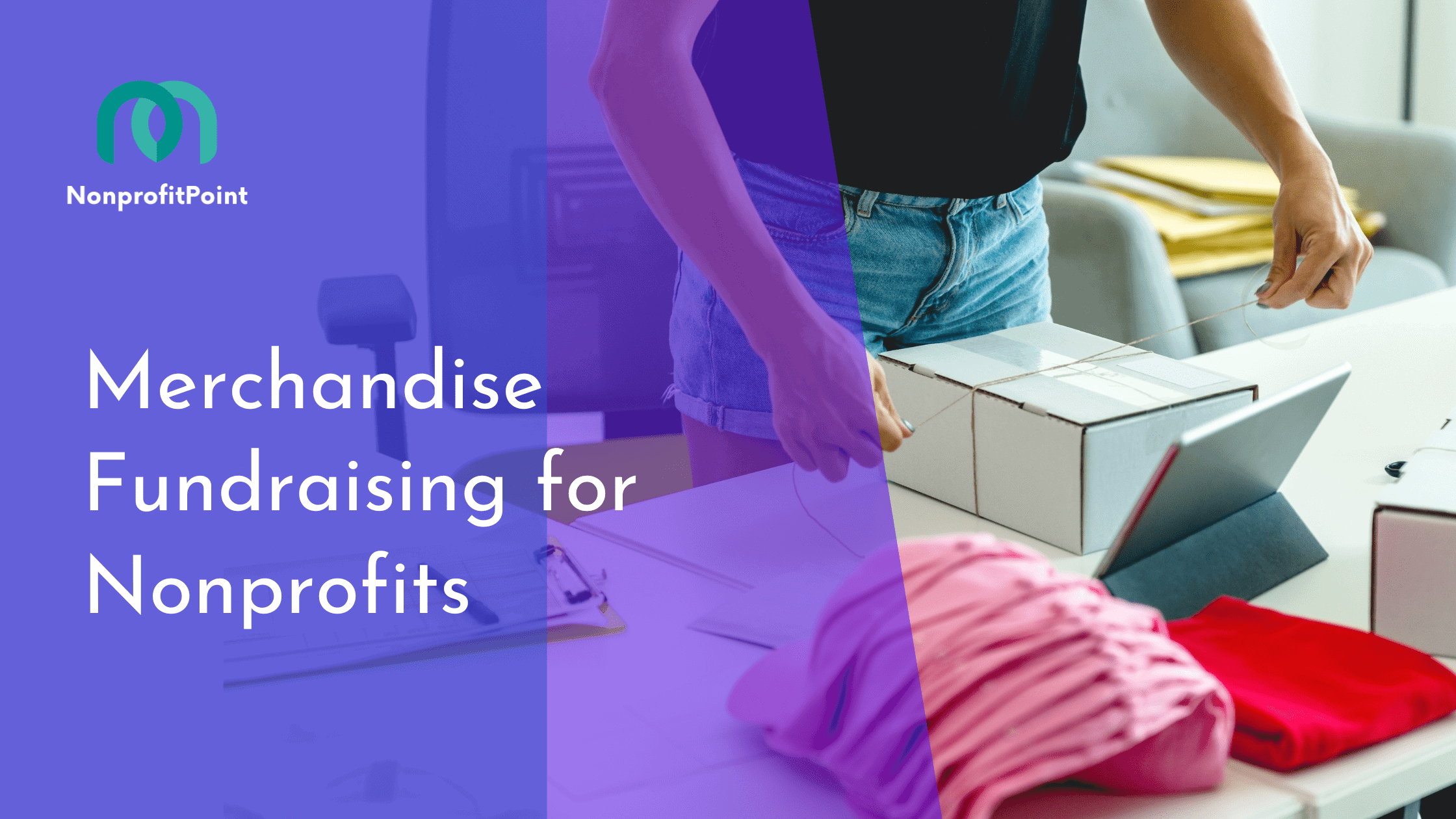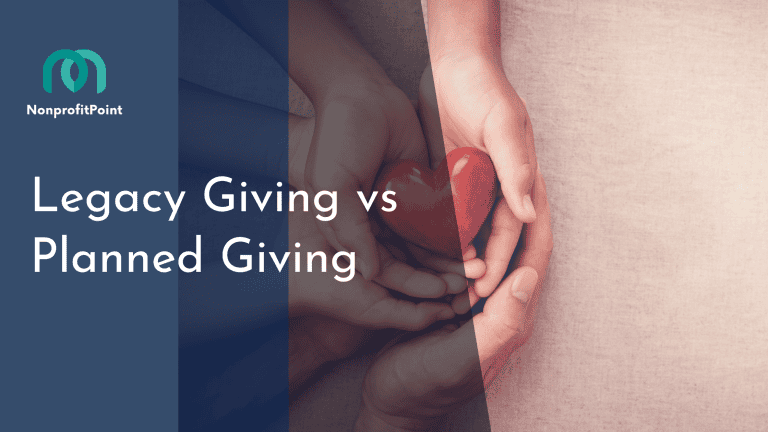Merchandise Fundraising for Nonprofits : A Complete Guide
In the world of fundraising, nonprofits are always looking for new and creative ways to raise money and engage their supporters. One approach that has gained popularity in recent years is merchandise fundraising. Simply put, merchandise fundraising involves selling branded items or other merchandise to raise money for a cause. It’s a creative way to generate revenue while also giving supporters a tangible way to show their support for a cause they believe in.
But why is merchandise fundraising so effective? For one, it’s a way to connect with supporters more personally, allowing them to donate to your cause and have something to show for it. Additionally, it can effectively raise awareness about your nonprofit and its mission, as supporters wear or use the merchandise in their everyday lives.
However, like any fundraising approach, merchandise fundraising also has its challenges. For example, creating and sourcing merchandise can be expensive, and managing inventory and order fulfillment can be time-consuming. Nonetheless, with the right strategy and planning, merchandise fundraising can be valuable to your nonprofit’s fundraising toolkit.
In this blog post, we’ll dive deeper into merchandise fundraising for nonprofits, exploring different types of merchandise fundraising, how to choose the right merchandise, and best practices for planning, marketing, and fulfilling orders. We’ll also discuss how to measure the success of your merchandise fundraising campaigns and offer tips for overcoming common challenges. By the end of this article, you’ll have a better understanding of how merchandise fundraising works and how your nonprofit can use it to boost your fundraising efforts and engage your supporters in new and exciting ways.
Types of Merchandise Fundraising

There are several types of merchandise fundraising that nonprofits can utilize to raise money for their cause. One of the most popular options is selling branded merchandise, such as t-shirts, hats, or wristbands, with the nonprofit’s logo or message prominently displayed. These items can be sold through an online store or at events, with proceeds going directly to the nonprofit’s mission. Branded merchandise generates revenue and serves as a walking billboard for the nonprofit, raising awareness about their cause as supporters wear the items in public.
Another type of merchandise fundraising is through online auctions. Nonprofits can leverage popular online auction sites like eBay to sell donated items to the highest bidder. The proceeds from the sale go directly to the nonprofit, and supporters can feel good about their purchase, knowing that the funds are going to a good cause.
A third option is peer-to-peer fundraising, which involves empowering supporters to fundraise on behalf of the nonprofit by selling merchandise. This can be done through custom storefronts, where supporters can choose from a selection of pre-approved merchandise to sell to their own networks, with a percentage of the sales going to the nonprofit.
Finally, some nonprofits may choose to create and sell unique products that are tied to their mission. For example, a nonprofit focused on environmental conservation may create and sell reusable water bottles or tote bags made from sustainable materials. These products can be sold online or in person, and they serve as a way to tie the nonprofit’s mission to a tangible product that supporters can use in their daily lives.
Each of these types of merchandise fundraising has its own unique benefits and challenges, and nonprofits should carefully consider which approach is right for their organization and audience. However, with the right strategy and execution, merchandise fundraising can effectively raise money and awareness for a nonprofit’s cause.
Choosing the right merchandise

Choosing the right merchandise is a crucial step in a successful merchandise fundraising campaign for a nonprofit. The merchandise should be carefully selected to align with the nonprofit’s mission and appeal to its target audience. Here are some key factors to consider when choosing merchandise:
First, consider the demographics of your target audience. What types of merchandise are likely to resonate with them? Are they more likely to buy clothing, accessories, or household items? By understanding your audience, you can choose merchandise more likely to sell and generate revenue for your cause.
Second, think about the quality of the merchandise. The merchandise should be of good quality and designed to last, so that supporters can use and enjoy the items for a long time. This can also help build brand loyalty and create repeat customers who will purchase merchandise in the future.
Third, consider the cost of producing the merchandise. Nonprofits must balance the desire for high-quality merchandise with the need to keep costs low to maximize profits. Consider factors like materials, production, and shipping costs when selecting merchandise.
Fourth, consider how the merchandise will be sold. Will it be sold primarily online or at in-person events? This will impact the types of merchandise sold, as some items may be better suited for online sales, while others may be more successful at in-person events.
Finally, choosing merchandise that ties in with the nonprofit’s mission and overall branding is important. The merchandise should be a visual representation of the nonprofit’s values and messaging, helping raise awareness and build brand recognition among supporters.
Overall, the merchandise a nonprofit chooses for its fundraising campaign should be well-considered and designed to appeal to its target audience while also aligning with its mission and branding. By selecting the right merchandise, nonprofits can create a successful fundraising campaign that generates revenue and builds support for their cause.
Planning and launching a merchandise fundraising campaign

Planning and launching a merchandise fundraising campaign for a nonprofit requires careful consideration and execution. Here are some key steps to take when planning and launching a successful campaign:
- Set clear goals: Determine the campaign’s specific fundraising goal and timeline, and establish metrics to track progress.
- Choose the right merchandise: Select merchandise that aligns with the nonprofit’s mission and target audience, while also considering cost and quality.
- Design the merchandise: Create eye-catching and attractive designs that appeal to supporters and tie in with the nonprofit’s branding.
- Establish a sales strategy: Determine how the merchandise will be sold, whether online, at in-person events, or through peer-to-peer fundraising.
- Set pricing and shipping policies: Determine the pricing for the merchandise, and establish policies for shipping and returns.
- Build a marketing strategy: Develop a marketing strategy to promote the merchandise and the campaign, leveraging social media, email marketing, and other channels to reach supporters.
- Launch the campaign: Launch the campaign, promoting it through various channels and providing regular updates on progress towards the fundraising goal.
- Track progress and adjust as needed: Monitor the campaign’s progress, and adjust the sales strategy, marketing tactics, and merchandise as needed.
It’s important to be mindful of potential challenges when launching a merchandise fundraising campaign, such as unexpected costs, inventory management, and logistics issues. Nonprofits should plan ahead to address these challenges and ensure the campaign runs smoothly.
Managing Inventory, Shipping and Handling
Managing inventory, shipping and handling, and customer service are critical components of a successful merchandise fundraising campaign. Here are some best practices for managing these aspects of the campaign:
- Inventory management: Keep close track of inventory levels to ensure enough merchandise to meet demand, but not so much that excess stock goes unsold. Consider using inventory management software to help keep track of stock levels and ensure that reorders are placed promptly.
- Shipping and handling: Determine shipping and handling policies, including shipping rates and timeframes, and ensure that these policies are communicated to customers. Consider using a third-party fulfillment service to handle shipping and handling logistics, particularly for larger campaigns.
- Customer service: Provide excellent customer service throughout the campaign to build customer loyalty and ensure that supporters have a positive experience. Respond to customer inquiries and complaints promptly, and take steps to address any issues that arise.
In addition to these best practices, it’s important to stay organized and stay on top of logistics throughout the campaign. Regularly monitor inventory levels, shipping and handling processes, and customer feedback to ensure that everything is running smoothly. With careful management and attention to detail, nonprofits can successfully execute a merchandise fundraising campaign and achieve their fundraising goals.
Marketing and promoting the merchandise fundraising campaign

Marketing and promoting a merchandise fundraising campaign is crucial to its success. Here are some key steps to take when promoting a campaign:
- Leverage social media: Use social media platforms like Facebook, Instagram, and Twitter to promote the campaign and engage with supporters. Create posts highlighting the merchandise and the campaign’s mission, and encourage supporters to share the posts with their followers.
- Utilize email marketing: Use email marketing to promote the campaign and keep supporters updated on its progress. Create a series of emails highlighting different aspects of the campaign, including the merchandise, fundraising goals, and success stories.
- Explore other promotional channels: Consider other channels like online advertising, influencer partnerships, and community events to reach a broader audience.
To create compelling product images and descriptions to drive sales, follow these tips:
- Use high-quality images: Use professional-quality product images that showcase the merchandise in the best possible light. Make sure the images are clear, well-lit, and accurately represent the product.
- Create attention-grabbing descriptions: Write descriptions that highlight the key features and benefits of the merchandise, and tie them to the nonprofit’s mission and goals. Use language that is clear, concise, and compelling.
- Emphasize the campaign’s impact: Highlight how the proceeds from the merchandise sales will be used to further the nonprofit’s mission and positively impact the world.
- Include customer testimonials: Use customer testimonials and reviews to build trust and social proof, and show potential customers that others have had positive experiences with the merchandise.
Overall, effective marketing and promotion are key to the success of a merchandise fundraising campaign.
Measuring and Evaluating Success
Measuring and evaluating the success of a merchandise fundraising campaign is important for understanding what worked well and what could be improved in future campaigns. Here are some key steps to take when measuring and evaluating campaign success:
- Set clear goals: Define clear and measurable goals for the campaign, such as the number of funds raised, the number of merchandise items sold, or the level of social media engagement. These goals should be specific, achievable, and aligned with the nonprofit’s broader mission and objectives.
- Track campaign metrics: Use tools like Google Analytics or social media analytics to track key metrics, such as website traffic, sales volume, social media engagement, and open email rates. This data will help you understand how the campaign is performing and identify areas for improvement.
- Solicit feedback from supporters: Survey supporters to gather feedback on the campaign, including their thoughts on the merchandise, the fundraising strategy, and the overall experience. This feedback can help identify areas for improvement and inform future campaigns.
- Evaluate campaign impact: Evaluate the impact on the nonprofit’s mission and goals. For example, if the campaign was designed to fund a specific program, evaluate how much funding was raised and how it will be used to further the program’s objectives.
- Analyze return on investment: Calculate the campaign’s return on investment (ROI) by comparing the number of funds raised to the cost of producing and promoting the merchandise. This will help the nonprofit understand the financial impact of the campaign and make informed decisions about future fundraising strategies.
By measuring and evaluating the success of a merchandise fundraising campaign, nonprofits can learn from their experiences and make data-driven decisions to improve future campaigns.
By setting clear goals, tracking campaign metrics, soliciting feedback from supporters, evaluating campaign impact, and analyzing return on investment, nonprofits can ensure that their fundraising efforts are as effective and impactful as possible.
Merchandise Fundraising Ideas
Here are a few merchandise fundraising ideas that nonprofits can consider:
Customized T-Shirts
Create custom t-shirts with unique designs that reflect the nonprofit’s mission or a specific campaign. For example, a wildlife conservation organization could create t-shirts with animal prints or designs of endangered species to raise awareness and support for their cause.
Not only do t-shirts provide a practical and affordable way for supporters to show their support, but they can also serve as a walking billboard for the nonprofit.
Personalized Jewelry
Offer personalized jewelry with the option to engrave supporters’ names, a special message, or the nonprofit’s logo. This can be a great way to create a unique and meaningful gift that supporters can wear as a daily reminder of their support for the nonprofit. For example, a youth organization could offer personalized bracelets or necklaces with inspirational quotes or messages of empowerment.
Eco-Friendly Merchandise
To appeal to environmentally conscious supporters, offer eco-friendly merchandise, such as reusable tote bags, water bottles, or bamboo utensils. This supports the nonprofit’s mission and aligns with current trends toward sustainability and reducing waste.
Virtual Merchandise
With the rise of virtual events and activities, nonprofits can also offer virtual merchandise, such as digital stickers, wallpapers, or Zoom backgrounds. These items can be sold or offered as a reward for donations, and they can be a great way to engage supporters and create a sense of community, even in a virtual environment.
Limited-Edition Artwork
Partner with local artists to create limited-edition artwork that reflects the nonprofit’s mission or a specific campaign. This can be a unique and creative way to engage supporters and raise funds for the nonprofit while also supporting local artists. The artwork can be sold as prints, posters, or even as one-of-a-kind pieces in a silent auction.
Final Thoughts
In conclusion, merchandise fundraising is a versatile and effective way for nonprofits to raise funds, build brand awareness, and engage their supporters. From custom t-shirts to personalized jewelry and eco-friendly merchandise, there are endless possibilities for creating unique and meaningful products that align with the nonprofit’s mission and values. However, it’s important to remember that merchandise fundraising is not a one-size-fits-all solution and requires careful planning, execution, and evaluation to ensure its success.
At its core, merchandise fundraising is more than just a way to generate revenue for a nonprofit. It’s an opportunity to connect with supporters, build a sense of community, and create a lasting impact. When done right, merchandise fundraising can be a powerful tool for driving change and bringing people together around a common cause.
As you embark on your own merchandise fundraising campaign, remember to stay true to your nonprofit’s mission and values, and be creative and innovative. By doing so, you can create a truly unique and meaningful experience for your supporters, and make a lasting difference in the world.






